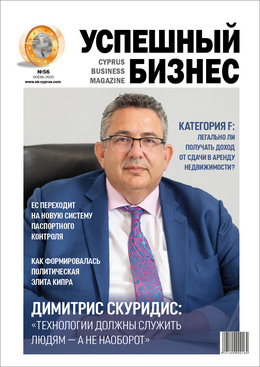Слухи о введении электронного реестра бенефициаров в европейских юрисдикциях ходили давно и, в конце концов, стали реальностью. 30 мая 2018 года Европейский союз издал Директиву 2018/843, дополняющую Директиву Евросоюза 2015/849 от 20.05.2015 г. (так называемая Директива AML 4 – Anti-Money Laundering Directive), а также предыдущие AML-директивы о противодействии использования финансовой системы для целей отмывания доходов и финансирования терроризма.
К 10 января 2020 года все юрисдикции Европейского cоюза, попадающие под действие Директивы AML 5, должны были внести изменения в местное законодательство.
Требование о ведении реестра бенефициаров различными юридическими лицами, оказывающими финансовые услуги, содержится и в Директиве AML 4, изданной в 2015 году. Однако ранее реестр был индивидуален для каждого клиента или компании, содержался во внутренних файлах лица, оказывающего услугу, и мог быть открыт только по запросу регулирующих организаций (таких, как полиция, комиссия по ценным бумагам и биржам и других). Реестр бенефициаров, предусмотренный Директивой AML 5, кардинально отличается, так как это общий реестр в электронном формате, доступ к которому может быть предоставлен гораздо более широкому кругу лиц.
Для начала давайте вспомним, кто считается бенефициарным владельцем. Определение бенефициарного владельца содержится в Директиве AML 4 (§3 (6)) – это физическое лицо, осуществляющее реальный контроль над компанией. В случае, когда акционеров в компании несколько, бенефициарным владельцем признается физическое лицо, владеющее 25% акций плюс одна акция компании (или более).
Если такое лицо установить не удалось, бенефициарным владельцем признается физическое лицо, осуществляющее реальное управление компанией (например, генеральный директор или управляющий менеджер).
Как будет выглядеть электронный реестр бенефициаров? Исходя из положений Директивы AML 5, должен быть создан национальный реестр, содержащий информацию о бенефициарах. Доступ к нему будет публичным с учетом некоторых нюансов. Безоговорочный доступ получают регулирующие организации (налоговые органы, комиссия по ценным бумагам и биржам и иные организации, в обязанности которых входит предотвращение и борьба с отмыванием доходов и финансированием терроризма). Каким образом будет организован доступ к реестру иным субъектам, каждой из стран-участниц ЕС предлагается решить самостоятельно. В Директиве AML 5 указано, что для пользования системой можно установить требование о регистрации в системе и оплате ее использования.
Информация о бенефициарах должна содержаться в реестре не менее пяти и не более десяти лет после того, как компания перестала существовать. Директива также предусматривает обмен данными между странами-участницами ЕС с помощью Центральной европейской платформы (European Central Platform), установленной Директивой Евросоюза 2017/1132.
Следует отметить, что требование о внесении информации о бенефициарах касается как компаний, так и трастовых структур и финансовых организаций по всем счетам, кроме брокерских, и депозитарным ячейкам. Реестр бенефициаров для компаний должен быть открыт к внесению данных с 10 января 2020 года, реестр бенефициаров для трастовых структур – с 10 марта 2020 года, реестр бенефициаров для счетов – с 10 сентября 2020 года. Обмен информацией с помощью Центральной европейской платформы должен быть доступен с 10 марта 2021 года.
Если говорить о компаниях, в электронный реестр бенефициаров будет вноситься такая информация как имя, дата рождения, компания, страны резидентства и гражданства, национальность и процент бенефициарного владения.
Для трастовых структур предусмотрено внесение информации о поверенных, учредителях трастов, бенефициарах или иных лицах, осуществляющих контроль над трастом, и протекторах при их наличии. Также будет вноситься информация о счетах: имя или уникальный идентификационный номер, номер IBAN, дата открытия и закрытия счета. Для депозитарных ячеек – имя лица, арендующего ячейку, или индивидуальный идентификационный номер.
В данной статье мы кратко рассмотрели основные положения Директивы AML 5, касающиеся электронного реестра бенефициаров, однако следует учитывать отсутствие практики в данной области. Поэтому уверенно говорить о том, как именно будет работать электронный реестр бенефициаров в той или иной юрисдикции, пока преждевременно. Совершенно очевидно, что прозрачность, присущая юрисдикциям с общей системой права, практически перестанет существовать с введением Директивы AML 5, особенно на фоне уже действующего автоматического обмена налоговой информацией (Common Reporting Standard – CRS).
С учетом того, что европейские законодатели не стоят на месте и европейское бизнес-сообщество ожидает выхода Директивы AML 6 в ближайшее время, по вопросам построения бизнес-процессов и выбора юрисдикции для ведения бизнеса всегда лучше обращаться за консультацией к квалифицированным специалистам.
Ирина Отрохова
Руководитель комплаенс отдела
Корпоративные услуги
Korpus Prava
Этот адрес электронной почты защищён от спам-ботов. У вас должен быть включен JavaScript для просмотра.















